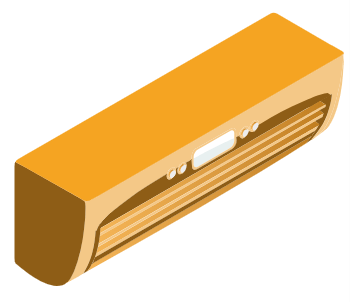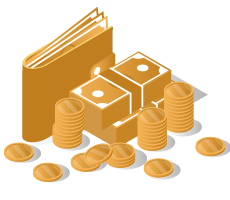Saving Money with Your Air Conditioner in Australia
Managing air conditioning costs in Australia is essential, especially during the intense heat of summer and chilly winters. By understanding how air conditioners work, choosing the right unit, and using it efficiently, you can save money while staying comfortable year-round.
Choosing the Right Air Conditioner for Your Home
Selecting the right air conditioner is the first step in reducing your energy bills. The size of the unit plays a crucial role. If you’re wondering, “What size air conditioner do I need?”, consider the size of the room. Smaller rooms typically need a 2.5 kW unit, while larger open-plan areas might require 7 kW or more. Choosing the right size prevents the unit from overworking and using excessive electricity.
Split system air conditioners are among the most popular options in Australian homes. These systems have an indoor unit and an outdoor compressor, making them efficient for single or multi-room setups. If you’re looking for versatility, reverse cycle air conditioners offer both cooling and heating, making them ideal for year-round use. Popular brands like Mitsubishi, Daikin, Panasonic, and Fujitsu are known for their energy-efficient models that cater to various home sizes and needs.

How Much Electricity Does an Air Conditioner Use?
The amount of electricity an air conditioner uses depends on its size, type, and how often it’s running. Here’s a breakdown:
- A 2.5 kW split system air conditioner typically uses around 0.6–0.8 kWh per hour, costing about $0.20–$0.30 per hour.
- A 5 kW unit uses 1.2–1.5 kWh per hour, costing $0.40–$0.60 per hour.
- Larger 7 kW units can consume 2–3 kWh per hour, costing $0.60–$1.20 per hour.
If you’re using a portable air conditioner, they may consume slightly more power due to less efficient cooling. Evaporative air conditioners, on the other hand, are much cheaper to run, costing as little as $0.10 per hour in some cases.
Setting the Ideal Temperature: A Key to Savings
Knowing the right temperature settings for different seasons is essential for saving money. In summer, set your air conditioner to 24–26°C. Every degree below this range can increase your energy consumption by approximately 10%. For winter, aim for a setting of 18–20°C to stay warm without unnecessary energy usage. By maintaining these temperature settings, you can enjoy a comfortable home energy-efficient cooling.

Want to Switch to a New Energy Provider?
Speak to an agent or see more plans for free !
Keeping Your Air Conditioner Efficient
Efficiency is key to saving money on electricity bills. One simple step is learning how to clean your air conditioner. Regularly cleaning or replacing filters allows air to flow freely, reducing the system’s workload. It’s also important to clear any dust or debris from the outdoor unit to improve performance.
Understanding how air conditioners work can help as well. These systems cool by removing heat from indoor air and expelling it outside. Keeping the system clean ensures this process works efficiently. Regular maintenance and servicing are essential to ensure long-term efficiency.

How do I clean my air conditioner?
To clean your AC unit, turn off the power, remove the front cover or filter, vacuum any dust and debris, wipe the coils with a damp cloth, and clean or replace the filter before reassembling and turning the system back on.
Portable and Evaporative Air Conditioners: Budget-Friendly Options
Portable air conditioners are a convenient option for renters or smaller spaces. While not as efficient as split systems, they provide flexible cooling without installation. Brands like Kmart and Bunnings offer affordable portable air conditioners that cater to various budgets.
For those in drier climates, evaporative air conditioners are a more economical choice. These systems cool by evaporating water, making them cheaper to run than traditional air conditioners. To maximize efficiency, ensure there is adequate airflow in the room.
Compare energy plans designed to handle the extra cooling load and save money.
Tips for Reducing Air Conditioning Costs
Using air conditioners efficiently is essential for reducing electricity bills, especially during the peak summer months. Here are practical ways to save money:
- Seal Gaps: Ensure windows and doors are closed to prevent hot air from entering.
- Use Timers: Set your air conditioner to turn off when you leave or go to bed.
- Use Fans: Ceiling or pedestal fans help circulate cool air, reducing the strain on your air conditioner.
- Regular Cleaning: Clean or replace air filters regularly to ensure optimal airflow.
- Block the Sun: Use curtains or blinds to block sunlight during the hottest parts of the day.
- Energy Star Ratings: Choose air conditioners with higher Energy Star ratings for better efficiency.
- Zone Control: If possible, cool only the rooms you use frequently.

Good Buyz offers a variety of sustainable smart home appliances and devices designed to work with renewable energy systems. Their range includes energy-efficient refrigerators, washing machines, smart thermostats, and lighting—all designed to reduce electricity use and integrate seamlessly with solar panels and battery storage. These products help you create a greener, more connected home by optimizing energy consumption automatically through smart controls and app-based scheduling.
How to Save Money During Australia’s Hot Summers
In the middle of summer, air conditioners work overtime to cool your home. To save money during this period, use your air conditioner’s economy mode if available. This mode adjusts the compressor speed to maintain a more energy-efficient temperature. You can also run your air conditioner during the cooler parts of the day and rely on fans to circulate the cool air. Avoid setting the temperature too low—24°C is often the sweet spot for comfort and cost-efficiency.

Popular Air Conditioner Brands to Consider
When shopping for an air conditioner, consider trusted brands known for energy efficiency and durability so you can get the best aircon for your home. Mitsubishi is a leader in the industry, offering reliable and efficient split systems. Daikin provides a wide range of reverse cycle units, while Panasonic is known for quiet operation and smart technology. Fujitsu offers high-quality models at affordable prices, and Gree is a rising brand offering budget-friendly solutions.
Here’s an estimate of cost-effective air conditioner prices across popular brands:
| Brand | Type | Price Range |
|---|---|---|
| Mitsubishi | Split/Reverse Cycle | $900 - $3,500 |
| Daikin | Split/Reverse Cycle | $1,000 - $4,000 |
| Panasonic | Split/Reverse Cycle | $1,100 - $3,800 |
| Fujitsu | Split/Reverse Cycle | $800 - $3,200 |
| Gree | Split/Reverse Cycle | $700 - $2,500 |
| Portable Units | Various Types | $300 - $1,500 |
Stay Comfortable While Saving Money
Air conditioning is essential in Australia’s climate, but it doesn’t have to break the bank. By choosing the right air conditioner size, using it efficiently, and keeping it well-maintained, you can significantly reduce your energy bills. Whether you opt for a split system, reverse cycle, or portable air conditioner, brands like Mitsubishi, Daikin, and Fujitsu offer energy-efficient options for every home. Implementing smart money-saving strategies—especially during the hot summer months—will ensure you stay cool without overspending.
Frequently Asked Questions
How do I choose the right air conditioner size for my home?
Match the air conditioner’s capacity to your room size. Smaller rooms need 2.5 kW units, while open-plan areas might require 7 kW or more. Selecting the right size helps the unit run efficiently and saves on energy costs.
How much electricity does an air conditioner use?
A 2.5 kW split system typically uses 0.6–0.8 kWh per hour, costing about $0.20–$0.30 per hour. Larger units use more—7 kW models may use 2–3 kWh per hour. Portable air conditioners consume slightly more power, while evaporative units can cost as little as $0.10 per hour.
What is the ideal air conditioner temperature setting?
Set your air conditioner to 24–26°C in summer and 18–20°C in winter. Every degree lower in summer or higher in winter can increase energy consumption by about 10%.
How can I keep my air conditioner running efficiently?
Clean or replace air filters regularly and clear dust from the outdoor unit. Schedule periodic servicing for best long-term efficiency and performance.
What brands offer energy-efficient air conditioners in Australia?
Mitsubishi, Daikin, Panasonic, Fujitsu, and Gree are known for efficient models. These brands often feature inverter technology, smart controls, and high Energy Star ratings.
What are practical tips to reduce air conditioning costs?
Seal gaps in doors and windows, use timers, run ceiling or pedestal fans, keep air filters clean, block sunlight with curtains, choose high star-rated models, and use zone control to cool only rooms you need.
Click below to find a better deal for your home!


